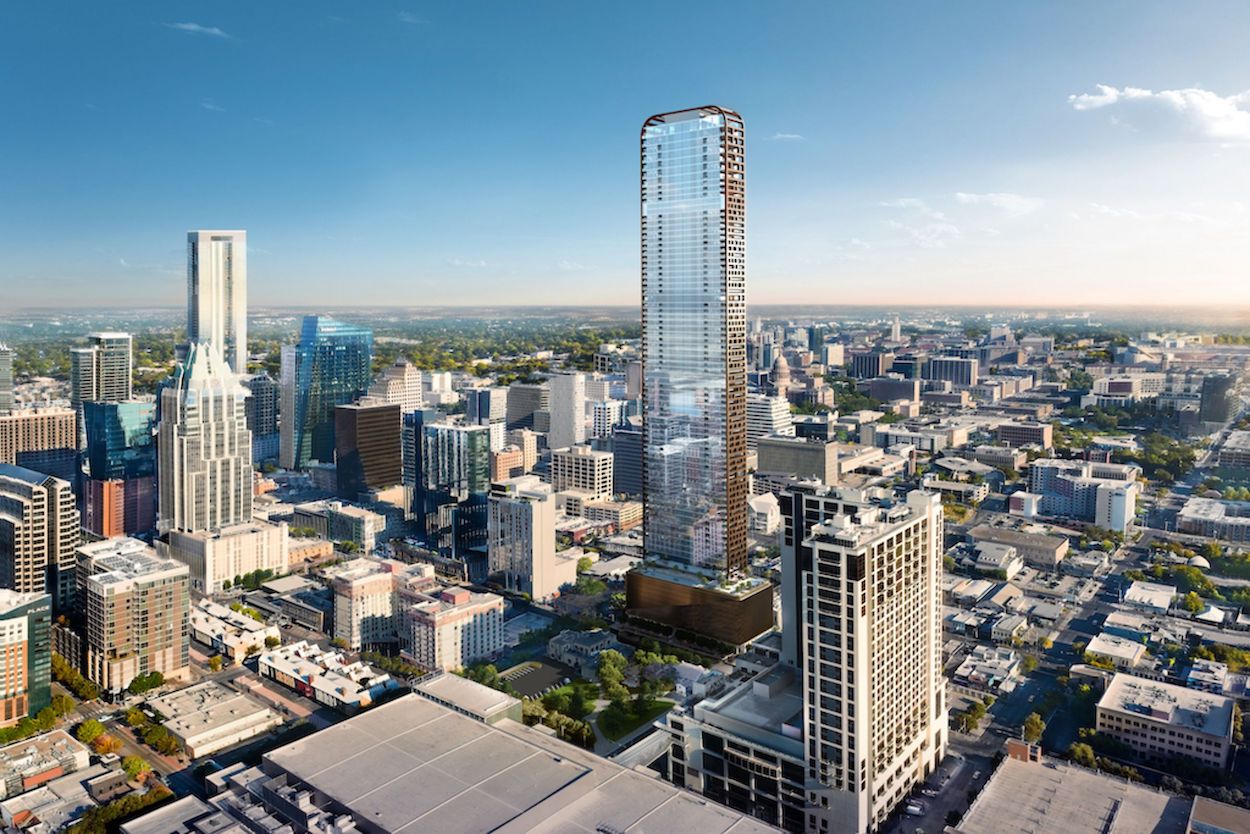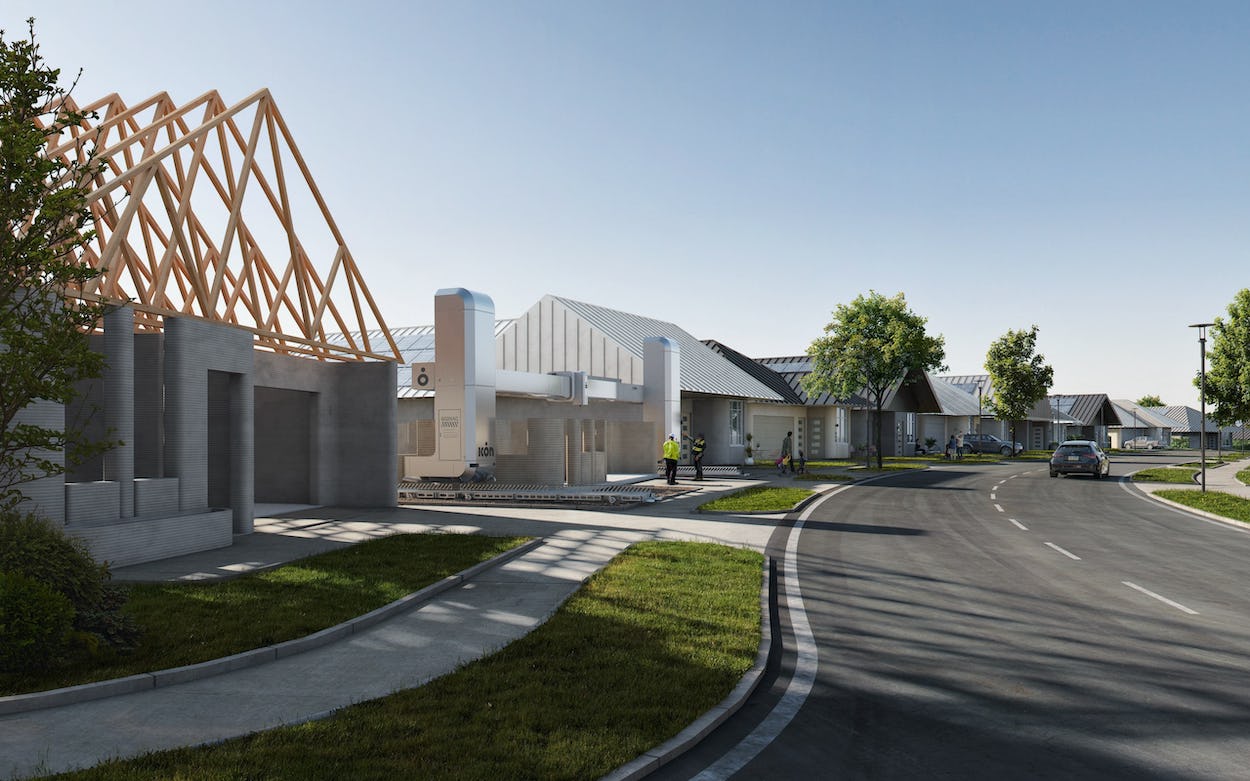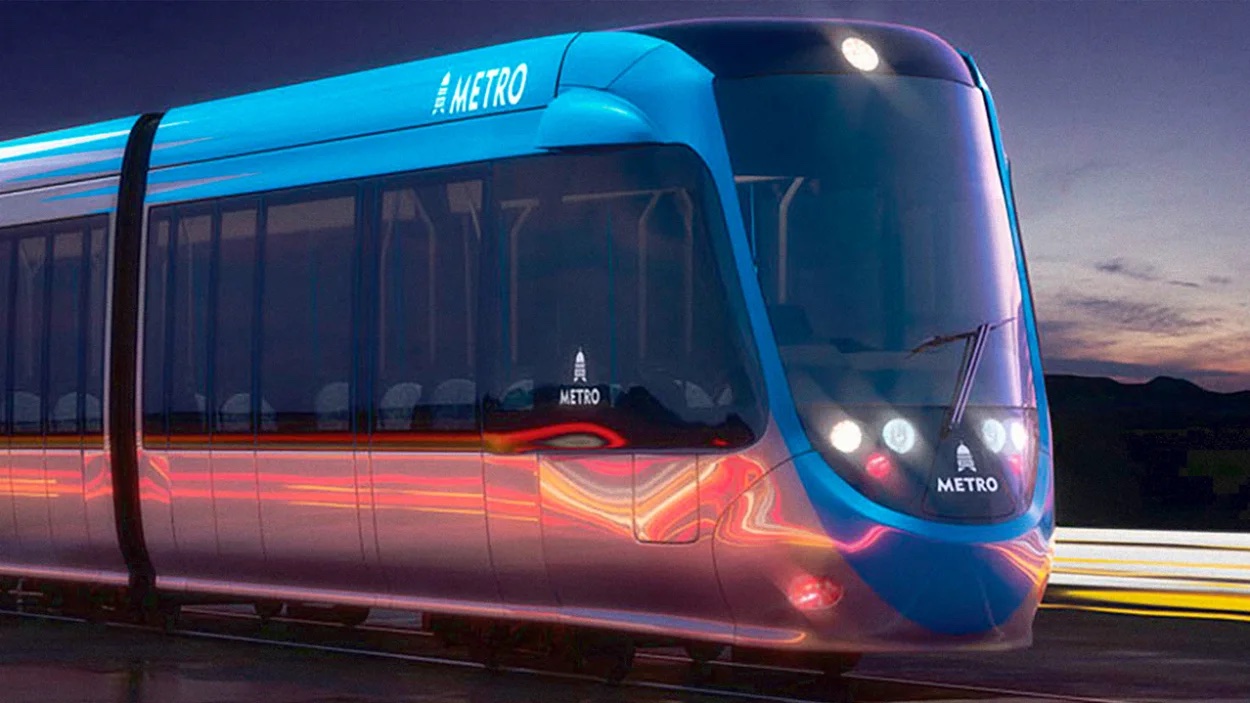Austin is booming—and for longtime residents of Texas’s famously livable “blueberry in the tomato soup,” the transformational forces at play are trading in “weird.” Silicon Valley titans, lured by the prospect of low taxes and less regulation, have stampeded into the city en masse, erecting giant Tesla gigafactories, the sail-shaped Google building, and a sprawling Apple campus. South Congress, once Austin’s funkiest street, is now home to Hermès and Soho House. A flurry of cranes is reshaping the once-modest downtown skyline into a showpiece for supertalls. Their glassy panes reflect the sweltering sun, sizzling sidewalks. Traffic snarls, rents are rising, and homelessness has reached an all-time high.
Perhaps most emblematic of Austin’s rapid-fire economic growth—and demand for apartments and condos—are plans to build two skyscrapers that, at just over 1,000 feet tall, will reign as the Lone Star State’s tallest buildings. Waterline, a shimmering high-rise designed by New York firm Kohn Pedersen Fox, will bring 74 stories of apartments, hotels, and office space to the once-sleepy Rainey Street District when construction wraps up in 2026. Ground is breaking this year on HKS’s taller Wilson Tower, whose golden brise-soleil has drawn comparisons to a “giant harmonica.” More than 20 similar buildings are on the books, exciting investors but concerning preservation advocates about the rate of change forever altering the city’s character.
Those concerns are valid, but it’s hard not to be intrigued by the innovation percolating. Underway in the northern community of Georgetown is a 2,500-home neighborhood, Wolf Ranch, which at first may seem like another dime-a-dozen suburban subdivision. Look closer and giant robots are building 100 homes that will soon form the world’s largest 3D-printed community, a collaboration between home-builder Lennar, 3D-printing startup Icon, and Bjarke Ingels Group called the Genesis Collection. Layer by layer, Icon’s Vulcan printer extrudes a concrete mixture called Lavacrete to form the structures’ walls. Construction takes three weeks, minimizes waste, and reduces heating and cooling costs. Pricing is projected at around $400,000—not bad for the city prone to skyrocketing housing costs.
Wolf Ranch is hardly the only major project relying on design innovation to maintain Austin’s livability as the city blooms into a bona fide metropolis. Efforts are underway to create a modern rail transit system called Project Connect, which is slowly taking shape after voters approved plans in 2020. City officials are leaning on UNStudio, Gehl, and HKS to devise initial blueprints for stations and other elements. Gehl director Anna Muessig says to expect “seamless transfers” as well as public art and shaded public spaces, but a ballooning price tag thanks to inflation, supply chain bottlenecks, and an appreciating property market have stymied the plans.
“We didn’t go into this with any kind of preconceived notion or design direction,” Chi Lee, office director for HKS Austin, told Fast Company about plans for Project Connect. “What we do know is that we want to preserve the Austin vibe. People here are very nice. It’s a very comfortable place to live. We have natural environments that kind of flow through our city. All of those need to be preserved.”



